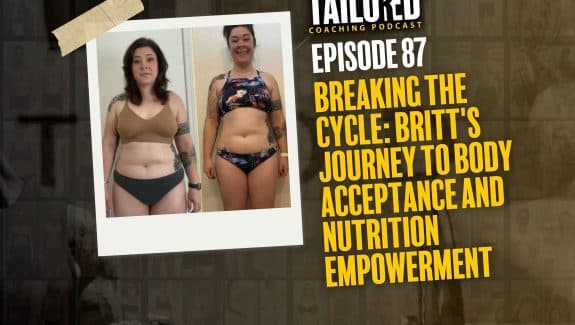Intermittent Fasting… Talk about a dietary can of worms! Typical bodybuilders and “Meat Heads” hate it and every hipster in the gym swears by it.
If you don’t already know what intermittent fasting is, it’s pretty simple – skip breakfast. Yep… that’s the simplest way to explain it, but obviously there is a bit more to the picture when it comes to truly doing it properly.
It’s gotten more and more hype over the years, in fact – if we take a look at Google, it’s unbelievable to see how much it’s taken off in the last decade.

If you want to really dive into all the science and details regarding it, check out Martin Berkhan with his Lean Gains website and approach. He’s truly the man behind the diet when it comes to originating the entire thing.
So you now you might be thinking, “What gives Boom-Boom? This shit is old news, why write about it now??”
Well, they finally did a legit study on it. And by a legit study, I mean doing it on training individuals rather than sedentary elderly folks, lab rats, or some other population that doesn’t really effect or relate to anyone who is a human being that is in the gym regularly.
(I always give credit where credit is due; so shout out to Greg Nuckols for bringing it to my attention!)
Because with all the claims of testosterone and growth hormone boosting, metabolism increasing, cortisol dropping, muscle not being lost and more fat being lost – us gym rats really want to know what the deal is!
Does Intermittent Fasting Work, Or Not?!
Well, just like every other thing in the fitness and nutrition industry… It kind of depends. But lets take a look at the studies because lets be honest, scientists are a bit smarter than me.
The first study was finally published within about a week or so ago. All the participants were in their 20’s and 30’s and have training experience of at least 5 years – calories and macros were tracked in all participants.
Half of them ate all of their calories in an 8-hour window, with meals at 1 p.m., 4 p.m., and 8 p.m. (Intermittent Fasting Group). The other half ate at 8 a.m., 1 p.m., and 8 p.m. each day (Non-IF Group – Evenly spread meal frequency).
Both groups had a high protein diet, about .8-.9 grams per lb of bodyweight, which is extremely common within the fitness community. Calories were controlled and not changed throughout the diet, meaning variables were maintained which is another ideal way to have a study performed. Both groups also trained 3x per week, full body, following the exact same routine (exercises, sets, reps, intensity, etc.).
As you can see, the study was actually performed pretty well. There wasn’t a whole lot of negative things or excuses to say the study is bogus, like most studies seem to be.
So far, the only negatives I see were that it only lasted 8 weeks. Although that is a good amount of time to follow a diet and see changes, it’s not long enough to assume all hormonal changes happened or for those that did happen, would stay long term.
The other negative was that the intermittent fasting group was in a slight calorie deficit, 200 calories per day. This isn’t a significant amount, but from a weekly caloric perspective, it is enough to drop body fat. The study claims that the fat loss in that group was found due to hormonal changes, specifically from the intermittent fasting, and we cannot disprove that technically. But part of me leans toward the side of it simply being caloric restriction that led to the fat loss…
But lets get into that. The IF group lost 1.6kg (3.5lbs) more than the non-fasting group did, in the 8-week period. The authors of the study claim the fat loss difference is likely due to the effects of the hormone ‘adiponectin’ (which did increas in the IF group but not the non-fasting group), which can act in the brain as an increaser of energy expenditure.
That could have been true, and if it were, it would be a big physiological advantage to IF… The issue here now is that they did not take any tests or measures to ensure the participants were in a neutral energy balance before starting. It also would’ve helped to have both groups go through the study without being in any deficit, so we can rule the 200-calorie deficit out of the picture.
Now, am I just playing devils advocate and nit picking? Yeah, a little bit. But with science, you really have too because we can use a study to prove that walking and eating broccoli can increase the risk of cancer if we wanted to and had the lab resources.
Ok, so what were the benefits of fasting?
Well there were a few that were highlighted and could raise an eyebrow.
Testosterone and IGF-1 levels decreased, levels of several pro-inflammatory cytokines decreased, cortisol levels increased, insulin and blood glucose levels decreased, triglyceride levels decreased, T3 levels decreased and RER decreased slightly. Those are all things we’d expect to see in a calorie deficit. And while it’s true that the IF group was in a calorie deficit, it was a very tiny one (below 10% of maintenance) – probably not a big enough deficit to explain those effects.
All these things make us believe that IF could possibly “trick” the body into thinking it’s in a calorie deficit, even when it is not at all or just really close to being in one. If that’s true, then this could be a great thing – assuming we could diet on more calories, yet get the effect of dieting on less.
There have also been studies to show that fasting could have benefits to our gut microbiome, digestion, and other health and longevity factors. Many of the studies have been done on less frequent, longer fasting periods (24, 36, 48 hour fasting).
The main point there is that there could be benefits to it, even if we just simply implement it on occasion.
So what about the negatives?
Well, the first one to bring up and the most important by far is simply adherence. If you’re a morning person, love breakfast, or simply cannot stay consistent with fasting – then it is not a good choice for you.
The number one key to losing weight, improving body composition, and sticking to a diet is adherence. Without adherence, it’s pointless to even try and that’s always the first thing I cover when helping a client with a diet protocol.
(If you struggle to adhere to your plan and stay consistent, Click Here Now and apply for a Free Transformation Session)
Another possible negative would be for anyone who would like to focus more on building muscle mass. The reason being is simple, intermittent fasting does 3 major things that can stall building more muscle or gaining weight.
1.) It takes away a big chunk of your day that you could be getting calories in and as we know, we need to be in a caloric surplus (eating more than we burn) to really put on muscle mass – this just makes it more difficult to do so.
2.) If the claims above are all correct and IF does “trick your body” into being in a diet state, than the negative sides of that could bite you in the ass while trying to gain. Things like testosterone and IGF-1 (growth hormone) decreasing and cortisol being increased could possibly stall the growth process.
3.) Many may call me the ultimate “bro” for this, but the truth is… this backed by science too. By removing breakfast and extending the fast from sleep, we’re limiting our ability to get protein in throughout the day. I’m not one to say you need massive amounts of protein each day, but studies have shown that muscle will recovery and grow more if we can spread out our protein intake over the course of the day.
By doing this, MPS (Muscle Protein Synthesis) is drawn out for longer durations. Best way to ensure we’re on top of MPS for maximal muscle growth is to aim for consuming 25-40g of protein every 3-5 hours. The big picture of hitting your daily intake is more important, but this is another variable for growth that definitely could help or make things more optimal.
So before I leave the negative side of things, I got a couple more possible cons of IF… And I promise I’m not an anti-fasting guy. In fact, I used IF daily for a long time, to this day still implement forms of it, and have multiple client using it as we speak.
Women!
 (Shot of Christmas Abott – Does she use IF? I have no clue. But she’s hot, tatted, and does crossfit, a lot of crossfitters use IF, so I used her for this shot)
(Shot of Christmas Abott – Does she use IF? I have no clue. But she’s hot, tatted, and does crossfit, a lot of crossfitters use IF, so I used her for this shot)
Ok, I’m going to break this down as simply as possible. Women have more sensitive and reactive hormones than men do. Women’s hormones need more attention, balanced energy (nutrition/calories), and they seem to react to changes more easily.
It makes sense, their survival is vital for the race of man – plus their body is always in a state of wanting to support a child inside them.
Now does this mean women shouldn’t fast? Not at all.
There are many women who can pull it off, feel great, cut body fat and experience all the benefits from it. But the percentage of women who can is much lower than men.
Stress and Recovery Related Issues!
If you’re someone who is facing actual adrenal fatigue, have serious stress issues, or are not recovering from daily activities, then IF is probably not for you.
Without going into even more studies and the geeky science stuff I love, just know that it is very similar to the statement above about women. Hormonally, you just may not be in the best position to try out an IF style diet.
For these people, balanced nutrition is really the key. Getting extremely beneficial fat sources in daily, things like fatty fish, cage free high omega-3 eggs, coconut oil, and mixed tree nuts. Spreading out whole food lean proteins in each meal and being sure to have a serving of fruit and plenty servings of veggies, every single day, as well.
Fat Loss and Muscle Building results come a lot better to these individuals when they specifically focus on health, versus the next fat loss diet.
(If you want a Nutrition System that is exactly what I explained above – Easy to follow, stress free and produces results – for FREE, Click Here and it’s yours instantly)
Implementing Intermittent Fasting
Ok, so now that I’ve touched on it all – The studies we do have, the pros, and the cons… Now lets break down how to or if you should implement this into your routine.
First way I’d recommend it is the way I use this personally. If you’re new to it, more so just curious as to if you’d like it, and want to see how you’d feel doing so, this way is for you.
Pick one day that you do not train or a light training day that is placed in your evening and fast anywhere from 16-24 hours.
Obviously if you’re new to this, start with 16. The next week bump up to 18, then 20, then 22, and so on. This is a 1-day per week approach and in my opinion is the easiest way to implement IF into a routine.
What do you get out of 1 day of fasting? You create a bigger weekly caloric deficit (by just taking calories one single day, instead of all 7 days), you give your digestive track a break, it can help improve insulin and blood glucose levels which can help you absorb and break down carbohydrates better, and has many gut health benefits as well.
The second way is for those who have read the entire article and have clearly decided they fit into the role of being right for this style of eating. For you guys, just start implementing it!
Start with 12-14 hours and when you get comfortable with that, bump it up too 15-16 hours. I wouldn’t recommend going much higher then 16 hours on a daily basis simply because it becomes hard for most to get in enough quality nutrients and calories.
If you want an example of how a good day of meals would look like using different intermittent fasting approaches, check out Precision Nutrition’s Free eBook here.
At the end of the day, fasting works. Just like paleo, low carb, low fat, and IIFYM all work – you need to create a caloric deficit to lose weight and a surplus to gain weight.
Does intermittent fasting have some other benefits that do not directly relate to simple calories? Absolutely. Are there negatives to IF as well? Absolutely. Just like everything else on planet earth!
Won’t know until you try it for yourself!
But if you’re unsure if it’s right for you, maybe you’re a female who is confused about whether or not it’s safe for you to try, or you want a specific outline of what your nutrition and/or training should look like – Click Here to Apply for a Free Transformation Session.























































































































































































































































































































































































































































































